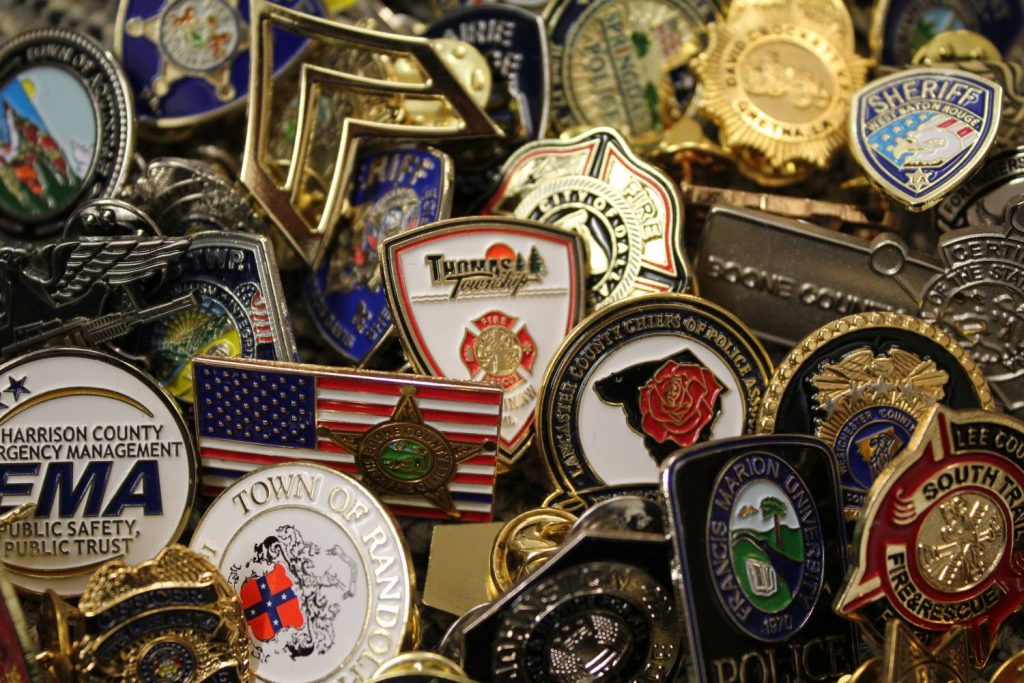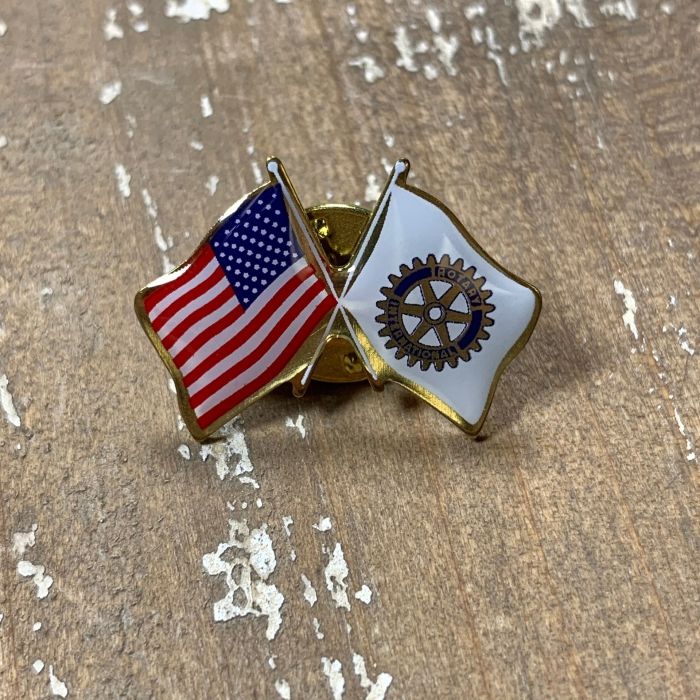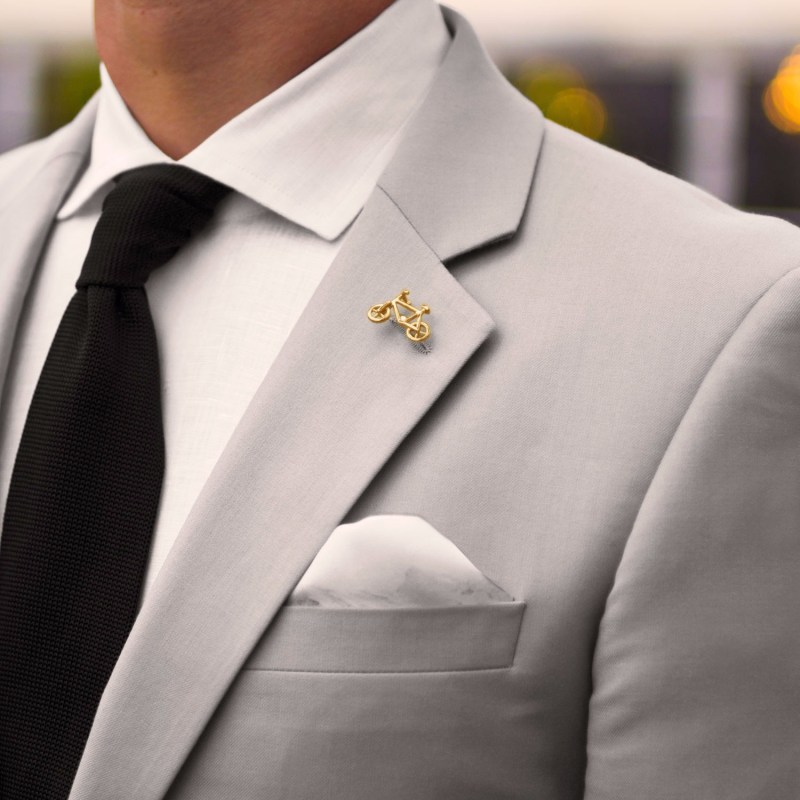Introduction
In a world dominated by fast fashion and fleeting trends, there exists a niche art form that has stood the test of time: antique lapel pins. These tiny, ornate pieces—often passed down through generations—carry a wealth of history, craftsmanship, and personal significance. Whether worn as symbols of allegiance, tokens of love, or simply as clever accessories, antique lapel pins offer a unique lens into the past. This article delves deep into the allure and historical importance of these timeless treasures.
The Origins of Lapel Pins
From Ancient Symbols to Modern Marvels
The concept of wearing decorative pins on clothing dates back to ancient civilizations. Early forms can be traced to ancient Egypt and Rome, where brooches and fibulae (similar to safety pins) were not only used for fastening garments but also as status symbols. These early forms of lapel pins were often crafted from precious metals and adorned with gemstones, indicating the wearer’s social standing.
Evolution Through the Ages
As history progressed, the use of pins on garments evolved. During the Middle Ages, badges were commonly used among European noble families, particularly during tournaments and military campaigns. These badges often bore heraldic symbols or the family crest, serving both as a means of identification and a mark of honor.
By the 19th century, the Industrial Revolution brought about advancements in metalworking and enameling techniques. This era saw the birth of the modern lapel pin, with designs becoming increasingly intricate and varied. Pins were no longer limited to nobility; they became accessible to a broader audience, finding their way into military uniforms, political campaigns, and social movements.
The Golden Age of Antique Lapel Pins
Victorian and Edwardian Eras
The late 19th and early 20th centuries are often considered the golden age of antique lapel pins. During the Victorian and Edwardian eras, these pins became a popular accessory for both men and women. The designs ranged from elegant and understated to elaborately decorated with enamel, pearls, and diamonds. Pins from this period often featured motifs of flowers, emblems, and even hidden compartments, reflecting the intricate craftsmanship of the time.
Art Nouveau and Art Deco Influences
The turn of the 20th century also saw the influence of Art Nouveau and Art Deco movements in lapel pin design. Art Nouveau, with its emphasis on organic forms and nature-inspired motifs, brought about pins that were more fluid and asymmetrical. On the other hand, the sleek and geometric patterns of Art Deco resonated with the tastes of the Roaring Twenties, giving rise to pins that were both fashionable and modern.
The Allure of Collecting Antique Lapel Pins
Sentimental Value
One of the primary reasons behind the enduring popularity of antique lapel pins is their sentimental value. Many pins are heirlooms, passed down through generations, each bearing a story and a connection to the past. Whether it’s a military pin earned by an ancestor or a pin commemorating a significant event, these items serve as tangible links to personal and communal histories.
Craftsmanship and Quality
Antique lapel pins are admired for their exquisite craftsmanship. Unlike many contemporary accessories, these pins were often handcrafted by skilled artisans, using high-quality materials and intricate techniques. The attention to detail and the quality of the materials used ensure that these pins not only stand the test of time but also remain visually stunning.
Investment Potential
While not the primary motivation for all collectors, the investment potential of antique lapel pins cannot be ignored. As with many collectibles, rare and well-preserved pins can appreciate in value over time. Collectors often look for pins with unique designs, historical significance, or those crafted by renowned makers.
How to Start Your Collection
Research and Education
Before diving into the world of antique lapel pins, it’s crucial to educate yourself. Understanding the history, styles, and makers can give you a significant advantage in building a meaningful collection. Books, online forums, and museums are excellent resources for gaining knowledge.
Condition and Authenticity
When purchasing antique lapel pins, it’s essential to consider their condition and authenticity. Be wary of replicas and ensure that you’re buying from reputable sources. Examine the pin for any signs of wear, damage, or repairs, as these can affect both its aesthetic appeal and value.
Specialization
Many collectors find it rewarding to specialize in a particular type or era of lapel pins. Whether it’s military pins, Art Nouveau designs, or pins from a specific country, specializing can help you develop a deeper understanding and appreciation for your chosen niche.
Famous Collections and Museums
The Smithsonian Institution
The Smithsonian Institution in Washington D.C. houses a remarkable collection of antique lapel pins, particularly those related to American history. The collection includes pins from political campaigns, military insignias, and commemorative pins from significant events.
The British Museum
The lapel pin collection at the British Museum offers a glimpse into the rich history of decorative accessories in Europe. From medieval brooches to Victorian era pins, the museum’s collection is both diverse and extensive.
Private Collections
Many notable private collections of antique lapel pins exist around the world. Enthusiasts like Queen Elizabeth II and former President Bill Clinton are known for their impressive lapel pin collections, which often include rare and historically significant pieces.
The Role of Lapel Pins in Modern Fashion
Revival of Vintage Styles
In recent years, there has been a revival of vintage styles in modern fashion, and lapel pins are no exception. Designers and fashion houses often draw inspiration from antique lapel pin designs, incorporating them into contemporary clothing and accessories. This trend has brought a new audience into the fold, further cementing the timeless appeal of these pieces.
Customization and Personalization
Modern technology has also paved the way for the customization and personalization of lapel pins. Today, it’s easier than ever to create custom designs that reflect personal tastes or commemorate special events. This trend dovetails nicely with the appreciation for antique lapel pins, as it allows new generations to create their own heirlooms.
Conclusion
Antique lapel pins are far more than mere accessories; they are miniature pieces of art that carry immense historical, sentimental, and aesthetic value. Whether you’re a seasoned collector or new to the world of antique lapel pins, these timeless treasures offer endless possibilities for exploration and appreciation. As the fashion world continues to recognize the elegance and significance of these miniature masterpieces, their allure remains as strong as ever.
For those looking to start their own collection or add to an existing one, the journey promises to be both enriching and rewarding.
Click here to get a custom lapel pin quote and begin your own legacy today.
FAQs
What are antique lapel pins?
Antique lapel pins are small decorative items, usually made from metals like gold, silver, or brass, often adorned with enamel or gemstones. These pins have historical significance and were used as fashion accessories, symbols of allegiance, or tokens of commemoration.
How can I identify an authentic antique lapel pin?
Authentication involves examining the craftsmanship, materials, and design. Consulting experts and using resources like books and online forums can also help. It’s essential to buy from reputable sources to avoid replicas.
Are antique lapel pins a good investment?
While the primary motivation for collecting should be personal enjoyment, antique lapel pins can appreciate in value over time, especially rare and well-preserved pieces.
Where can I buy antique lapel pins?
Antique lapel pins can be found in various places including antique shops, online marketplaces, auctions, and specialized dealers. Ensure you’re buying from reputable sources to guarantee authenticity.
How should I care for my antique lapel pins?
Proper care involves storing the pins away from direct sunlight and moisture. Cleaning should be done with a soft cloth, and any repairs should be handled by professionals to maintain their integrity.
Can I incorporate antique lapel pins into modern fashion?
Absolutely! Many fashion designers and enthusiasts incorporate antique lapel pins into contemporary ensembles. These pins add a unique and elegant touch to modern outfits.





